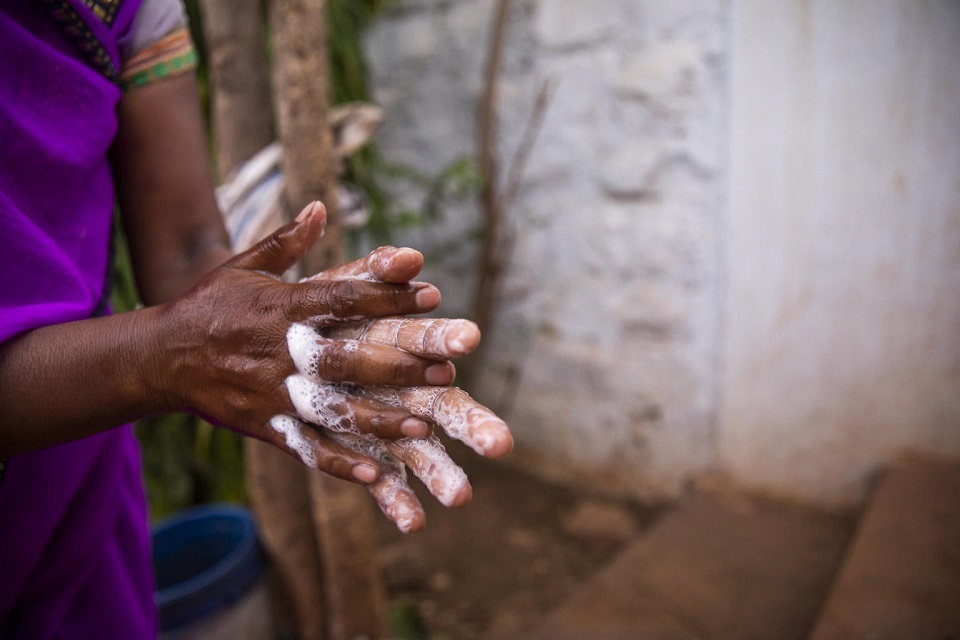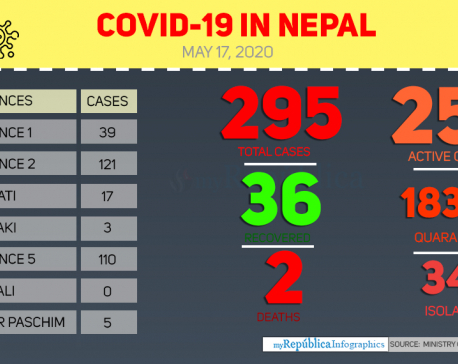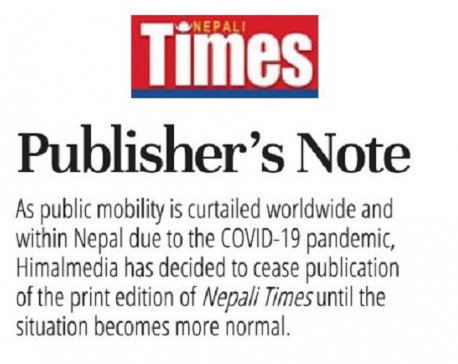
OR
COVID-19 outbreak fear
About 33% of Nepal's urban population still do not have access to handwashing with soap and water : UNICEF
Published On: March 18, 2020 07:15 PM NPT By: Kunga Hyolmo

KATHMANDU, March 18: At a time when people are being strongly advised by the international agencies to maintain adequate hand hygiene owing to the coronavirus outbreak, about 33 percent of the urban population or around 3 in 10 people in Nepal still do not have access to handwashing with soap and water, the United Nations Children’s Fund (UNICEF) said today.
In its latest fact sheet, the UNICEF said that only 66 percent of urban populations have access to handwashing with soap and water in Nepal. Globally, only 3 out of 5 people have basic handwashing facilities, the UN agency stated in a press release.
More than half of Nepal's population does not have access to handwashing with soap and water in their homes, the UNICEF stated.
"In Nepal, 54 per cent health care facilities have no access to handwashing facilities at point of care. Availability of disinfectant at outpatient departments of health care facilities is only 59 per cent while availability of water in delivery rooms at health care facilities is 69 per cent," the organization stated in the press release.
Urban populations are particularly at risk of viral respiratory infections due to population density and more frequent public gatherings in crowded spaces like markets, public transport or places of worship. People living in urban poor slums – the worst form of informal settlement – are particularly at risk, it said.
As per the UNICEF fact sheet, 40 percent of the world’s population, or 3 billion people, do not have a handwashing facility with water and soap at home.
Nearly three-quarters of the people in the least developed countries lack basic handwashing facilities at home.
47 percent of schools lacked a hand washing facility with water and soap affecting 900 million school-age children. Over one-third of schools worldwide and half of the schools in the least developed countries have no place for children to wash their hands at all.
16 percent of healthcare facilities, or around 1 in 6, had no functional toilets or handwashing facilities at either point of care where patients are treated.
In Central and South Asia, 22 percent of people in urban areas, or 153 million people, lack access to hand washing. Nearly 50 percent of urban Bangladeshis, for example, or 29million people; and 20 percent of urban Indians, or 91 million, lack basic handwashing facilities at home.
As the coronavirus response takes its toll on the health services in the affected countries, the practice of handwashing with soap is even more important in warding off common respiratory and diarrheal diseases.
UNICEF, therefore, has suggested the following ways of handwashing:
1) Wet hands with running water
2) Apply enough soap to cover wet hands
3) Scrub all surfaces of the hands – including the back of hands, between fingers and under nails – for at least 20 seconds.
4) Rinse thoroughly with running water
5) Dry hands with a clean cloth or single-use towel
You May Like This

Health ministry confirms three new COVID-19 cases, number of total cases reaches 295
KATHMANDU, May 17: Nepal reported three new cases of COVID-19 on Sunday evening, taking the national tally to 295. ... Read More...

Nepali Times weekly ceases print edition owing to coronavirus
KATHMANDU, March 20: Nepali Times, a weekly newspaper in Nepal has decided to cease its publication to be effective from... Read More...

SCOPE Nepal provides foil blankets to Nepal Army
KATHMANDU, Jan: SCOPE Nepal, an NGO working in peace, security, environment and social justice, handed over 378 emergency foil blankets to... Read More...






Just In
- Nepalgunj ICP handed over to Nepal, to come into operation from May 8
- Nepal to gift two elephants to Qatar during Emir's state visit
- NUP Chair Shrestha: Resham Chaudhary, convicted in Tikapur murder case, ineligible for party membership
- Dr Ram Kantha Makaju Shrestha: A visionary leader transforming healthcare in Nepal
- Let us present practical projects, not 'wish list': PM Dahal
- President Paudel requests Emir of Qatar to initiate release of Bipin Joshi
- Emir of Qatar and President Paudel hold discussions at Sheetal Niwas
- Devi Khadka: The champion of sexual violence victims



_20240423174443.jpg)









Leave A Comment